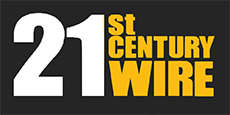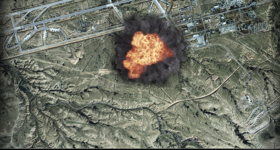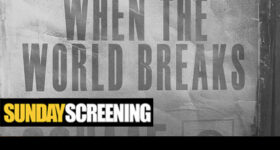21st Century Wire says…
Cody Wilson decided to do what Presidents and hacks in Washington like to talk about – he’s gone and tried to create a few manufacturing jobs in the USA, through the 3D printing revolution.
 3-D printing holds a lot of promise to future generations, not least of all the liberation from the tyranny of the transnational corporate globalist manufacturing web slavery. Then Cody went and tried to make a gun, and all hell is beginning to break loose…
3-D printing holds a lot of promise to future generations, not least of all the liberation from the tyranny of the transnational corporate globalist manufacturing web slavery. Then Cody went and tried to make a gun, and all hell is beginning to break loose…
Already, New York’s Senator Charles Schumer and Congressman Steve Israel want to shut down the progenitor of the first 3-D printed gun, Cody Wilson and his tech garage non-profit start-up Defense Distributed.
Angry liberals online are already unhappy with this small Texas entrepreneur, with some calling for Cody and his business partner to be prosecuted for terrorism charges because plans for this particular plastic gun might fall into the hands of terrorists.
Clearly, there are still some people who simply cannot handle the release of any new technology, let alone a blueprint for a gun. Definitely there are issues to face for manufacturing any lethal weapon but expect the governments worldwide to use the divisive “gun issue” in order to manipulate and control the 3D printing industry – keeping it out of the hands of individuals and into the hands of a corporate monopoly they can more easily deal with ($#$).
Now that this particular cat is out of the bag, will Biden, Dianne Feinstein and the gang soon begin a campaign to make 3-D printing illegal in America? Will it become another ‘national security issue’?
And their start-up efforts have been funded by… the Bitcoin community (99% of Defense Distributed assets are held in Bitcoins). Now, how about that!
Will politicians like Dianne Feinstein call to seize and ban Bitcoin too?
“Alright. One…two…”
Before “three” arrives, a shot reverberates across the overcast central Texas landscape.
 A tall, sandy blond engineer named John has just pulled a twenty-foot length of yellow string tied to a trigger, which has successfully fired the world’s first entirely 3D-printed gun for the very first time, rocketing a .380 caliber bullet into a berm of dirt and prairie brush.
A tall, sandy blond engineer named John has just pulled a twenty-foot length of yellow string tied to a trigger, which has successfully fired the world’s first entirely 3D-printed gun for the very first time, rocketing a .380 caliber bullet into a berm of dirt and prairie brush.
“F****n’ A!” yells John, who has asked me not to publish his full name. He hurries over to examine the firearm bolted to an aluminum frame. But the first to get there is Cody Wilson, a square-jawed and stubbled 25 year-old in a polo shirt and baseball cap. John may have pulled the trigger, but the gun is Wilson’s brainchild. He’s spent more than a year dreaming of its creation, and dubbed it “the Liberator” in an homage to the cheap, one-shot pistols designed to be air-dropped by the Allies over France during its Nazi occupation in The Second World War.
Unlike the original, steel Liberator, though, Wilson’s weapon is almost entirely plastic: Fifteen of its 16 pieces have been created inside an $8,000 second-hand Stratasys Dimension SST 3D printer, a machine that lays down threads of melted polymer that add up to precisely-shaped solid objects just as easily as a traditional printer lays ink on a page. The only non-printed piece is a common hardware store nail used as its firing pin.
http://youtu.be/_YIaAXg7Rbc
.
.
Wilson crouches over the gun and pulls out the barrel, which was printed over the course of four hours earlier the same morning. Despite the explosion that just occurred inside of it, both the barrel and the body of the gun seem entirely unscathed.
Wilson scrutinizes his creation for a few more seconds, then stands up again. “I think we did it,” he says, a little incredulous.
Last August, Wilson, a law student at the University of Texas and a radical libertarian and anarchist, announced the creation of an Austin-based non-profit group called Defense Distributed, with the intention of creating a firearm anyone could fabricate using only a 3D printer. The digital blueprints for that so-called Wiki Weapon, as Wilson imagined it, could be uploaded to the Web and downloaded by anyone, anywhere in the world, hamstringing attempts at gun control and blurring the line between firearm regulation and information censorship. “You can print a lethal device. It’s kind of scary, but that’s what we’re aiming to show,” Wilson told me at the time. “Anywhere there’s a computer and an Internet connection, there would be the promise of a gun.”
 On May 1st, Wilson assembled the 3D-printed pieces of his Liberator for the first time, and agreed to let a Forbes photographer take pictures of the unproven device. A day later, that gun was tested on a remote private shooting range an hour’s drive from Austin, Texas, whose exact location Wilson asked me not to reveal.
On May 1st, Wilson assembled the 3D-printed pieces of his Liberator for the first time, and agreed to let a Forbes photographer take pictures of the unproven device. A day later, that gun was tested on a remote private shooting range an hour’s drive from Austin, Texas, whose exact location Wilson asked me not to reveal.
The verdict: it worked. The Liberator fired a standard .380 handgun round without visible damage, though it also misfired on another occasion when the firing pin failed to hit the primer cap in the loaded cartridge due a misalignment in the hammer body, resulting in an anti-climactic thunk.
The printed gun seems limited, for now, to certain calibers of ammunition. After the handgun round, Wilson switched out the Liberator’s barrel for a higher-charge 5.7×28 rifle cartridge. He and John retreated to a safe distance, and John pulled his yellow string again. This time the gun exploded, sending shards of white ABS plastic flying into the weeds and bringing the Liberator’s first field trial to an abrupt end.
On the ride back to Austin after that first test-fire, Wilson seemed less than satisfied with the relative success of his 3D printed creation. He fixated on its misfiring and brooded about the tight deadline he’d given himself to work out its kinks before sharing the design on the Web. “I feel no sense of achievement,” he told me. “There’s a lot of work to be done.”
And the most significant test of the Wiki Weapon was still to come, a moment of truth that may have been looming in Wilson’s mind after watching his first prototype explode into plastic shrapnel: Firing the Liberator by hand.
***
By Friday at noon, photographs of the world’s first 3D-printed gun published on this site set off a new round of controversy in a story that has shoved one of the most hyped trends in technology into one of the most contentious crossfires in American politics. New York Congressman Steve Israel responded to Defense Distributed’s work by renewing his call for a revamp of the Undetectable Firearms Act, which bans any firearm that doesn’t set off a metal detector. “Security checkpoints, background checks, and gun regulations will do little good if criminals can print plastic firearms at home and bring those firearms through metal detectors with no one the wiser,” read a statement sent to me and other reporters.
Update: On Sunday, New York Senator Charles Schumer echoed (Steve) Israel’s call for that new legislation to ban 3D-printable guns. “A terrorist, someone who’s mentally ill, a spousal abuser, a felon can essentially open a gun factory in their garage,” Schumer said in a press conference.
 Israel and Schumer are hardly the first to oppose Wilson’s gun-printing mission. Last August, Defense Distributed’s fundraising campaign was booted from the crowdfunding platform Indiegogo. In October, 3D printer maker Stratasys seized a printer leased to the group after it found out how the machine was being used. And Wilson says he’s lost access to two workshop spaces after those renting to him learned about his mission. Instead, Defense Distributed has had to move its workshop to a 38-square-foot room at the southern edge of Austin that’s about the size of a walk-in closet, hardly larger than the refrigerator-sized 3D printer it houses.
Israel and Schumer are hardly the first to oppose Wilson’s gun-printing mission. Last August, Defense Distributed’s fundraising campaign was booted from the crowdfunding platform Indiegogo. In October, 3D printer maker Stratasys seized a printer leased to the group after it found out how the machine was being used. And Wilson says he’s lost access to two workshop spaces after those renting to him learned about his mission. Instead, Defense Distributed has had to move its workshop to a 38-square-foot room at the southern edge of Austin that’s about the size of a walk-in closet, hardly larger than the refrigerator-sized 3D printer it houses.
The second-hand Stratasys Dimension SST that Defense Distributed used to print the Liberator. It fills close to half of the group’s tiny 38-square-foot workshop space. (Click to enlarge)
But at each roadblock, the group has found a detour. It’s raised funds from donors through the digital currency Bitcoin, which thanks to that crypto-currency’s rising value now accounts for 99% of Defense Distributed’s assets, according to Wilson. In March it received a federal license to manufacture firearms, which Wilson has framed and posted on the wall of the group’s miniscule workshop. And it’s complied with the Undetectable Firearms Act by inserting a six ounce chunk of non-functional steel into the body of the Liberator, which makes it detectable with a metal detector–Wilson spent $400 on a walk-through model that he’s installed at the workshop’s door for testing. “Our strategy is overcompliance,” he says.
(There’s no guarantee, of course, that anyone who downloads and prints the Liberator will insert the same chunk of detectable steel.)…
READ MORE 3D PRINTING NEWS AT: 21st Century Wire 3D Printing Files














